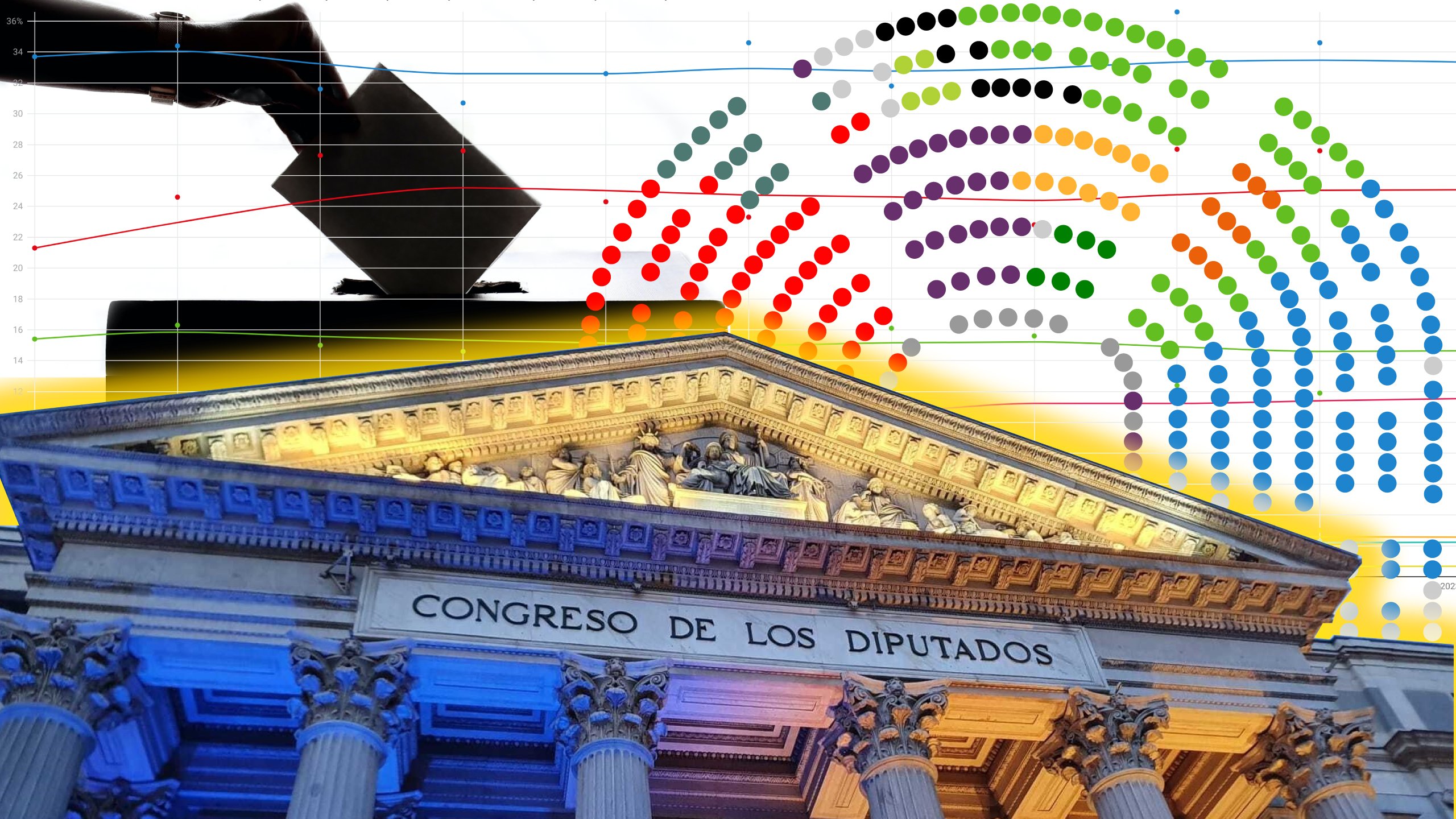On Sunday July 23rd, Spain goes to the polls for a general election, which was due later this year but was brought forward several months by prime minister Pedro Sánchez, the day after his Spanish Socialist (PSOE) party was well beaten in the May 28th municipal and autonomous elections: the right-wing People's Party (PP) obtained 31.53% of municipal votes across Spanish territory while the PSOE totalled 28.12%. The campaign for the election officially begins on July 7th, but really, it has scarcely paused since May 29th when Sánchez stunned voters by summoning them back to vote in the middle of the summer heat.
So why did he do it? Rather than wait seven more months for a political death foretold, Pedro Sánchez decided to attempt to control the agenda and called an election at just seven weeks' notice. Will it work? That's where this article comes in: ElNacional.cat's poll of polls, collating the opinion polls as they publish and allowing readers to check out whether the PSOE is reducing the difference, if the PP lead is holding or even increasing, how the new left-wing Sumar platform is shaping up, and whether far-right Vox is going to be in a position to demand entry into a PP government. Plus, our graph shows the progress of the main Catalan parties, Catalan Republican Left (ERC), Together for Catalonia (Junts), and the Popular Unity Candidacies (CUP). For all parties, there's a data point for each survey result (shown as a predicted percentage of the vote at Spanish level), and a rolling average.
Polls for the 2023 general election
The poll results are given in percentages of the overall vote, but the critical question is, how do those percentages map onto the allocation of seats in Spain's 350-seat lower house, the Congress of Deputies, whose balance will decide what government will be formed. The fact is that the same vote percentage can lead to differing numbers of seats depending on how it is distributed across Spain's large electoral constituencies. The electoral system is proportional, but not fully.
Not all polls give a forecast in terms of seats, but on Monday, July 3rd, for example, three major polls published by El Mundo, the Vocento group and El País with Cadena SER forecast the possible panorama in Spain after the elections: the seats projected for the PP and VOX together would reach or almost reach the absolute majority (176 MPs). On the other hand, if the combined total of the PP and Vox on July 23rd falls short of a majority, then perhaps the arithmetic will allow the Socialists to begin the difficult process of negotiating support from not only Sumar but other parties - such as, in the current legislature, ERC and the Basque PNV and Bildu. Or could there be a PP-PSOE grand coalition? Or even - as Felipe González has proposed - a deal between the two largest parties to simply let the election winner form a government?
In any case, as at July 4th, it becomes clear that the PP continues to lead all the polls, with an expected haul of between 100 and 150 seats, while the PSOE has so far failed to reduce the distance, and is expected to obtain between 85 and 110 seats. Vox and Sumar could contest the third position, although there is an advantage for Santiago Abascal's party, which the polls say could obtain between 30 and 45 seats, while Yolanda Díaz would obtain between 25 and 40. As for the Catalan parties, it's not clear in the first week of July which of the two pro-independence forces, Junts or ERC, would obtain most electoral support. At present they are both heading for around 5% of the total votes in the state, with between 8 and 12 seats for both ERC and Junts, and one seat for CUP if it obtains representation.
The data is based on all the above surveys conducted up to the last update date of this article (top of article), and the graphics will be updated with all the new surveys until the election on July 23rd, 2023. Polls can be legally published until five days before the elections.

